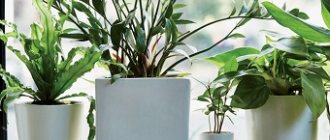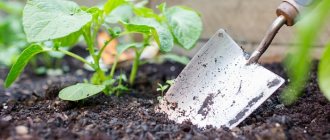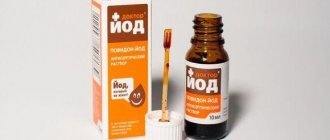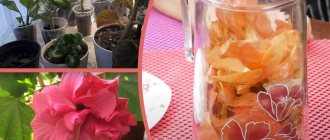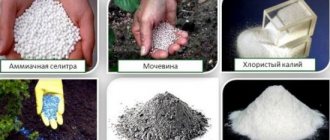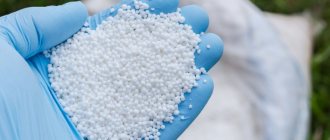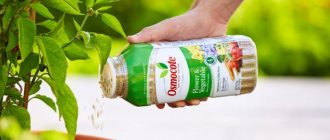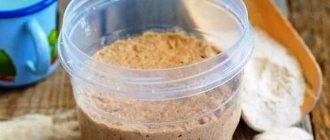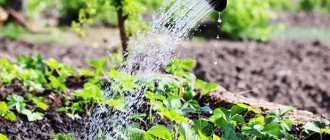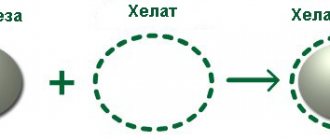Mineral fertilizers for indoor plants and flowers:
Mineral fertilizers can be nitrogen, potassium, phosphate or complex. Nitrogen, potassium and phosphorus are the main nutrients for plants.
Depending on the needs of a particular species and stage of development, the ratio and availability of these substances varies.
- Nitrogen fertilizers for indoor plants are mainly used during the active growing season (spring-summer) for maximum growth and development of shoots and leaves. They are mainly used for feeding decorative deciduous species.
- Potassium fertilizers, like nitrogen fertilizers, promote the growth of indoor plants, and together with phosphate fertilizers ensure abundant flowering. Fertilizers with a high content of potassium and phosphorus are used to feed decorative flowering species.
- Complex mineral fertilizers for house flowers are universal and applicable for most species.
Mineral fertilizers for indoor plants are produced mainly in liquid and dry (granules, powder) forms, and also come in tablets, capsules and sticks.
Methods for indicating the mineral content of a liquid solution
- % pure substance i.e. N/P/K – world system
- System of oxides of elements in % i.e. N/P2O5/K2O – CIS and Russia 3) grams per liter of element.
When preparing recipes, it is necessary to take into account that simple and double superphosphates are poorly soluble, and nitrogen fertilizers are divided into amide, ammonium and nitrate based on the quality of nitrogen.
Plants are able to assimilate only the ammonium form and all other species are converted to it through biochemical reactions.
.
Popular mineral fertilizers for plants
.
Advice
The amount of nitrogen-phosphorus-potassium (NPK) allows you to determine what types of plants the fertilizer is intended for.
For example, 15-5-5 is a lot of nitrogen, which means for decorative deciduous plants, 8-10-14 is a lot of phosphorus and potassium, which means for flowering plants, and 7-7-5 is a universal fertilizer.
Which fertilizers to choose
Today, the most common nitrogen fertilizers are ammonium nitrate and urea. These fertilizers can be purchased at any garden store and can be successfully used at home. The main thing when using these chemical compositions is to strictly follow the recommended dosage for each crop.
You can also prepare nitrogen fertilizers yourself at home. An excellent source of nitrogen is chicken or pigeon manure.
In addition to nitrogen, these fertilizers also contain other microelements and minerals necessary for healthy plant growth.
Every summer resident can prepare bird droppings at home. Bird guano must be dried in a special oven and ground into powder. Bird droppings can also be mixed with hay or sawdust. After 2 months, you can fertilize the soil with homemade healthy compost.
Banana peels are also a good source of nitrogen and potassium. If you love bananas and eat these healthy fruits all winter, do not throw away the peel, but dry it. It is better to dry banana skins on a radiator. After complete drying, the peel must be ground in a meat grinder, and in the spring, when digging up the garden, the crushed peel must be mixed with soil. As the peel rots, nitrogen and potassium will be released into the soil, which will make your plants strong and healthy.
If you make your own fertilizer using a compost bin, it is important that it contains peat. In the presence of peat, the nitrogen content in the compost increases.
Liquid fertilizers for indoor plants and flowers
Liquid fertilizers for indoor flowers and plants are a salt concentrate. To feed the plant, liquid fertilizer is diluted with water in a certain proportion, which is indicated in the instructions, and then watered.
- Efficiency . The root system of plants better absorbs nutrients in a liquid state.
- Convenience. It is easy to feed indoor flowers with fertilizer.
- Balanced composition. Liquid complex fertilizers for indoor plants take into account the individual needs of a particular species. For example, special complexes for succulents, orchids or palm trees.
- Possibility of foliar feeding through the stem and leaves. This feeding allows you not to oversaturate the plant with nutrients, but by spraying the leaves to make them brighter and thicker. Thus, the leaves will absorb the required amount of substances, and the plant will not be in danger of an excess of them. It must be remembered that the effectiveness of foliar feeding is maximum for young (1st year) indoor plants. In addition, plants with pubescent or glossy leaves practically do not absorb substances. These include: succulents, palm trees, Saintpaulia and other plants. IMPORTANT! Foliar feeding cannot replace root feeding and is an addition to it during the period of active growth and development of plants.
- Price. Liquid fertilizer for indoor plants is more expensive than granular fertilizer. Therefore, if you have a few plants and flowers, then this is the best option.
Liquid fertilizers for indoor flowers from Agricola
According to most experts, liquid mineral fertilizers are the best option for feeding indoor plants and flowers.
Vermicompost
This organic fertilizer is also used for growth. It is available in liquid and granular form. Unlike mullein and manure, humus does not have a strong odor, does not require sterilization, and is a product of the processing of special worms. But feeding it will allow you to qualitatively improve the appearance of your home flowers.
A substrate consisting of vermicompost, soil from the garden, sand in a ratio of 1:4:1 will help for many flowerpots that need replanting. In general, you need to follow the instructions on the bottle or package of the product. Photos of this fertilizer for indoor flowers can be seen on the Internet. Some gardeners prepare it themselves.
Dry mineral fertilizers
Dry fertilizer is a mixture of minerals in the form of granules or crystals. To feed, the dry mixture is diluted in water in strict accordance with the instructions so that there is no sediment at the bottom and the solution is completely homogeneous.
A small package of mineral fertilizer is usually diluted in 10-15 liters of water, so this is the best option for a large home garden.
Sticks for indoor plants
Tablets, sticks or capsules are long-acting fertilizers, i.e. minerals enter the plant gradually. One stick provides the plant with an average of three months (sometimes from 2 to 6).
The fertilizer usually contains nitrogen, potassium, magnesium, phosphorus, which is complemented by boron, manganese, iron, copper, molybdenum or zinc.
Recently, sticks against pests of indoor plants , which, in addition to feeding, help in the fight against insects (insecticide). Fertilizer sticks for pests contain the substance imidacloprid.
Application
Depending on the diameter of the container, calculate the number of sticks per indoor plant. It turns out something like this: 1 stick – up to 10 cm, 2 – 11-15 cm, 3 – 16-20 cm, 4 – 21-25 cm. The sticks are inserted into the substrate to a depth of 4-5 cm from the edge of the container at a distance of 1 -3 cm, and then the plant is watered.
.
The principle of operation of fertilizer sticks in a potted plant
.
Reviews
Opinions on the effectiveness of sticks for indoor plants among gardeners vary significantly. Experienced gardeners believe that using fertilizers in the form of sticks does more harm than good.
Near the sticks in the substrate there is an increased concentration of elements and insecticide, which negatively affects the root system.
Therefore, it is better to use fertilizer (for example, liquid with humic acids) and insecticide separately.
Advice
Objectively, we can say that when using nutrient sticks, it is better to break them into small pieces (crush), this way you will ensure a more uniform absorption of minerals by the plant.
PRICE. Depending on the manufacturer, in terms of one piece from 2 euro cents to 5.
How to prepare mineral fertilizer yourself?
- Nitrogen fertilizer: ammonium sulfate, ammonium nitrate or urea - 1 g per 1 liter of water.
- Potassium fertilizer: potassium sulfate, potassium salt or potassium chloride - 1.5 g per 1 liter of water.
- Phosphate fertilizer: dry superphosphate – 6 grams per 1 liter of water or 1 part per 30 parts of soil.
How to use natural fertilizers
Fertilizing must be applied after moistening the earthen clod the next day. If you fertilize plants on dry soil, you can burn the roots and ruin the flower. Nutrient formulations can be diluted with water or used in dry form. Dry agents are sprinkled on the top layer of soil, then loosened and watered.
Advice! Liquid formulations are best poured closer to the edges of the pot. You should not overwater the plant; a small amount will be enough. Take settled, warm water.
Organic fertilizers for indoor plants
Organic fertilizers include: manure, litter, compost, humus - excellent suppliers of nitrogen, and wood ash - an excellent source of potassium and calcium.
There is a lot of debate among specialists and experienced gardeners regarding the advisability of feeding indoor plants with organic fertilizers.
We can say for sure that organic fertilizers make the soil mixture more moisture- and breathable, especially the periodic application of humus, and stimulate the active growth of green mass.
Wood ash, according to leading experts, is the most perfect organic fertilizer for indoor plants.
We talked about it in detail in the additional material to this article about home fertilizers.
Peculiarities
Organic or natural fertilizers for indoor plants have their own specifics. Organic fertilizers are not suitable for bulbous and corm species, and variegated decorative-deciduous plants can become ordinary green if improperly fertilized.
Preparation
Before feeding plants, organic matter must be sterilized. Sterilization is carried out only with the help of fire, and after that it is kept for 20-25 days to restore the biological environment.
- Therefore, experts advise buying organic supplements in ready-made form.
Application
Flower growers recommend using mullein infusion (one tablespoon per one liter of water) or bird droppings (one teaspoon per one liter of water).
This fertilizer is recommended for use for large and fast-growing plants, and it has a particularly beneficial effect on asparagus, vines, indoor roses, palm trees, pelargonium and primrose.
| A unique complex fertilizer increases the yield up to 10 times! |
Vermicompost for indoor plants
Many experienced gardeners believe that it is better to use organic fertilizers for indoor plants (except ash) based on vermicompost (Vermistim, Humisol).
In the composition of such fertilizers, pay attention to the % of humic substances (salts or acids).
Application of vermicompost
We offer ways to use vermicompost for indoor plants and seedlings, namely the substance itself, and not a liquid concentrate (extract).
- For nutrient substrate. Vermicompost, garden soil, sand – 1:4:1. This universal recipe is suitable for planting and replanting many types of indoor plants, but certain types require individual amendments.
- To accelerate root formation. 1 tsp. per 100 ml of water - place a cutting of a houseplant in this nutrient solution.
- For mulching and fertilizing. A layer of soil mixture (1-2 cm) is removed from above and vermicompost is poured in its place, and then watered with water. This bookmark lasts for about 2-3 months.
- For feeding. 5-6 tbsp. l. Vermicompost is dissolved in one liter of water and left for 24 hours. Then water the plants and flowers every 10-14 days. Before this, the solution must be stirred.
.
One of the options for organic fertilizer with vermicompost
.
Peculiarities
The pH of vermicompost is 6.5-7.5, almost neutral. Vermicompost may contain worker worms, but they do not damage the plant, and after they grow up they can be thrown outside. It is undesirable to sterilize vermicompost - its beneficial properties are lost. Real vermicompost does not mold.
Nitrogen fertilizers: types, application features and dosage
There are different types of nitrogen fertilizers and for each of them there are special rules and individual application rates, but general recommendations are also important and should not be neglected when using such fertilizers. Complex nitrogen-containing fertilizers can consist of two, three or more components. It is allowed to carry out scattering, band application of fertilizers, as well as spraying and watering with fertilizers.
Amide
Urea or urea is the most concentrated amide fertilizer among nitrogen fertilizers produced in granular form. It has good physical characteristics and can be used for any agricultural crop as a main application or foliar feeding. Foliar feeding at the rate of 300 ml of working solution per 10 m². The working solution is prepared from 50-60 g per bucket of water. For fruit and berry plantings, the working solution consists of 20-30 g per bucket of water. Application for vegetable and fruit crops, strawberries and flowering plants - 130-200 g per 10 m2. Pre-sowing application is 4 g per hole.
Why do plants need nitrogen (video)
Ammonia
Ammonia water is a solution of ammonia in water. Liquid fertilizers are applied using special machines with embedding to a depth of 10-12 cm or more. On light soils, the depth of application of fertilizers of this type should be increased to 16-18 cm. Such ammonia fertilizers are applied during fall plowing or pre-sowing cultivation , and are also used when feeding row crops. Ammonium sulfate contains a significant amount of sulfur, so this feeding is also a good source of effective sulfur nutrition.
Ammonium nitrate
Ammonium nitrate is an ammonium nitrate granular fertilizer with good dispersibility, and is available with conditioning additives in the form of magnesium, calcium, sulfate or sulfate with phosphate. Optimally suitable for any application method. Nitric acid salt is applied as the main fertilizer with incorporation into the soil at the rate of 10-20 g per square meter, and is also used for foliar and root feeding at the rate of 50 g per bucket of water.
Nitrate
The category of nitrate fertilizers includes sodium and calcium nitrate, which are physiologically alkaline and are used on acidic soils. In the spring, nitrate fertilizers are used as pre-sowing fertilizer , and are also widely used in pre-sowing cultivation and are used for root and foliar feeding.
It is strictly forbidden to add sodium nitrate in the autumn, because in this case there is a significant leaching of nitrogen into groundwater. It is recommended to use ammonium nitrate solution at the rate of one tablespoon per bucket of water at room temperature.
Fertilizers for flowering indoor plants
Flowering indoor plants are fed with a special fertilizer, as certain minerals are needed for abundant flowering.
Fertilizer for flowering indoor plants allows you to achieve better and longer flowering, prevents buds from falling off and helps produce fruit.
Basic fertilizer for flowering, approximate composition: nitrogen (N) - 10 g/liter, phosphorus (P) 20 g/liter, potassium (K) 30 g per 10 liters of water + vitamins B1, B6 and PP.
Castor oil
Fertilizing with castor oil, according to some gardeners, is very effective for beautifully flowering plant species at the time of bud setting (budding) - 1 tsp. for 1 liter of water.
Liquid fertilizers for feeding flowering indoor plants
- For young plants. Potassium salt, ammonium nitrate, superphosphate - 15:10:15 g per 10 liters of water.
- Before budding for flowering. Potassium salt, ammonium nitrate, superphosphate - 15:20:25 g per 10 liters of water.
- After flowering. Potassium salt, ammonium nitrate, superphosphate - 10:20:25 g per 10 liters of water.
Recommendations
- Flowering indoor plants need to be fed as soon as the buds appear and continue until flowering ends.
- Carefully observe the dosage and frequency of fertilizing - an excess of minerals has a negative effect on the plant.
- An excess of nitrogen is especially undesirable, as it stimulates the growth of green mass and slows down flowering.
- Potassium and phosphorus are the key to successful flowering and fruiting. Some gardeners prefer to use “Ideal” fertilizer for flowering indoor plants with a high phosphorus content.
- Before flowering, phosphorus is the most essential substance for a plant; if it is deficient, growth and development are delayed, brownish-purple spots appear on the leaves, and they themselves curl.
.
Liquid fertilizers for indoor plants from Pokon: for flowering, decorative and deciduous species and universal.
.
Which plants need phosphorus?
Flowering plants need phosphorus more than others: poinsettias, begonias, anthuriums, hippeastrums, spathiphyllum... It is better to feed them by frequent application of small amounts of phosphorus fertilizer, especially before the process of budding and the beginning of flowering. Non-flowering plants (for example, aspleniums, araucarias, ficuses) require less phosphorus, so they need to be fertilized with phosphates less often. Plant tubs are rarely fertilized with phosphates.
There are rules for applying fertilizers that are common to all plants: only healthy plants in the process of active growth can be fertilized, the dosage must be strictly observed, and fertilizers can only be applied to moist soil. In addition, it is better to allow some deficiency of the element in the soil than to allow its excess accumulation.
If there is an excess of phosphorus, the plant may develop chlorosis, its leaves will turn yellow and fall off, and if there is a very large oversaturation, the plant may die. If, according to the signs described, you find too high a concentration of phosphorus in the soil, do not despair, just wash the soil to remove phosphates or replant the plant in fresh soil.
